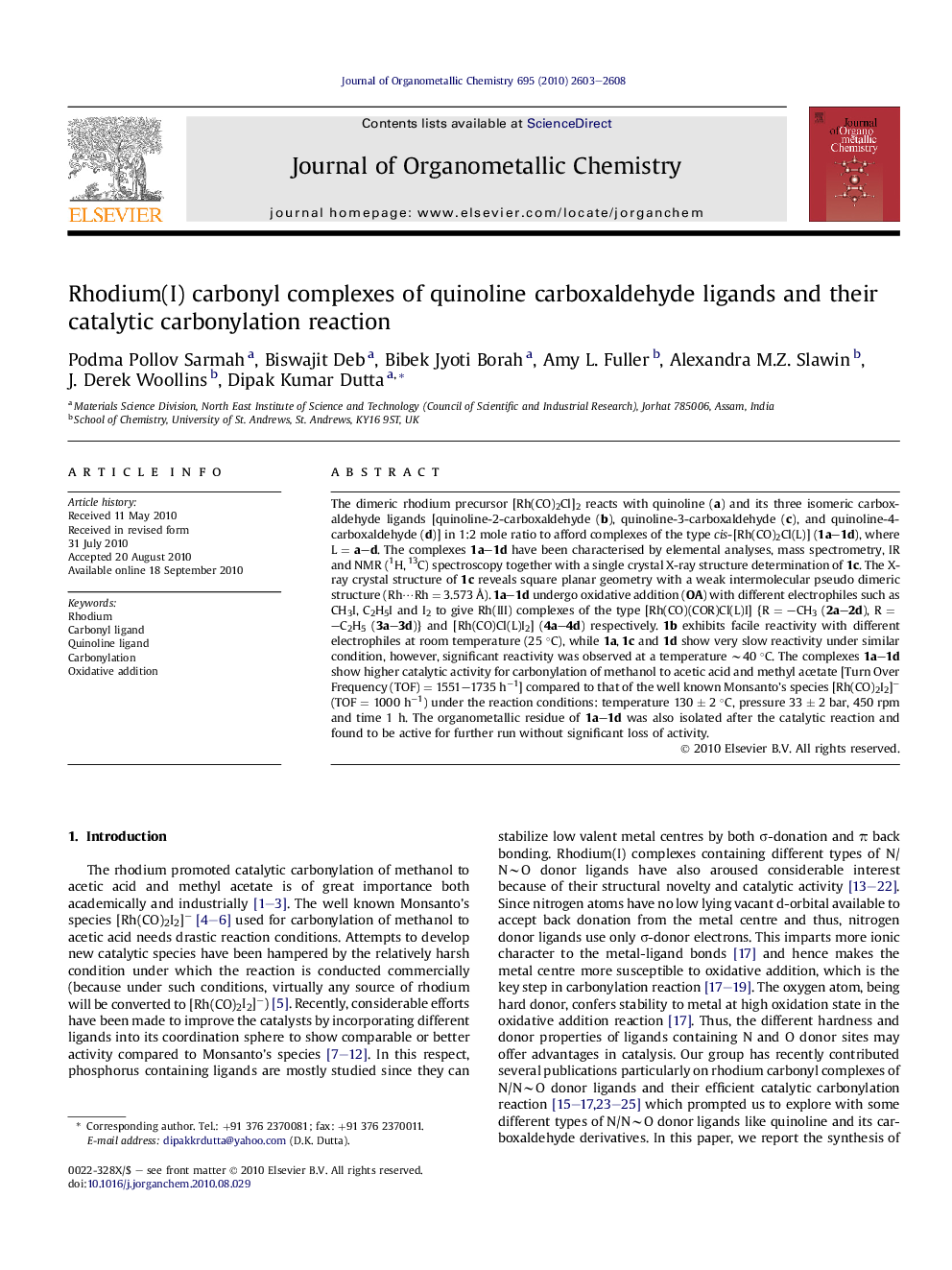| Article ID | Journal | Published Year | Pages | File Type |
|---|---|---|---|---|
| 1322618 | Journal of Organometallic Chemistry | 2010 | 6 Pages |
The dimeric rhodium precursor [Rh(CO)2Cl]2 reacts with quinoline (a) and its three isomeric carboxaldehyde ligands [quinoline-2-carboxaldehyde (b), quinoline-3-carboxaldehyde (c), and quinoline-4-carboxaldehyde (d)] in 1:2 mole ratio to afford complexes of the type cis-[Rh(CO)2Cl(L)] (1a–1d), where L = a–d. The complexes 1a–1d have been characterised by elemental analyses, mass spectrometry, IR and NMR (1H, 13C) spectroscopy together with a single crystal X-ray structure determination of 1c. The X-ray crystal structure of 1c reveals square planar geometry with a weak intermolecular pseudo dimeric structure (Rh⋯Rh = 3.573 Å). 1a–1d undergo oxidative addition (OA) with different electrophiles such as CH3I, C2H5I and I2 to give Rh(III) complexes of the type [Rh(CO)(COR)Cl(L)I] {R = –CH3 (2a–2d), R = –C2H5 (3a–3d)} and [Rh(CO)Cl(L)I2] (4a–4d) respectively. 1b exhibits facile reactivity with different electrophiles at room temperature (25 °C), while 1a, 1c and 1d show very slow reactivity under similar condition, however, significant reactivity was observed at a temperature ∼40 °C. The complexes 1a–1d show higher catalytic activity for carbonylation of methanol to acetic acid and methyl acetate [Turn Over Frequency (TOF) = 1551–1735 h−1] compared to that of the well known Monsanto’s species [Rh(CO)2I2]− (TOF = 1000 h−1) under the reaction conditions: temperature 130 ± 2 °C, pressure 33 ± 2 bar, 450 rpm and time 1 h. The organometallic residue of 1a–1d was also isolated after the catalytic reaction and found to be active for further run without significant loss of activity.
Graphical abstractFour new rhodium carbonyl complexes of quinoline and its carboxaldehyde ligands like quinoline-2-carboxaldehyde, quinoline-3-carboxaldehyde and quinoline-4-carboxaldehyde have been synthesized. The complexes exhibit a significantly higher catalytic activity in the carbonylation of methanol to acetic acid and methyl acetate compared to the well known Monsanto’s species [Rh(CO)2I2]−.Figure optionsDownload full-size imageDownload as PowerPoint slide
